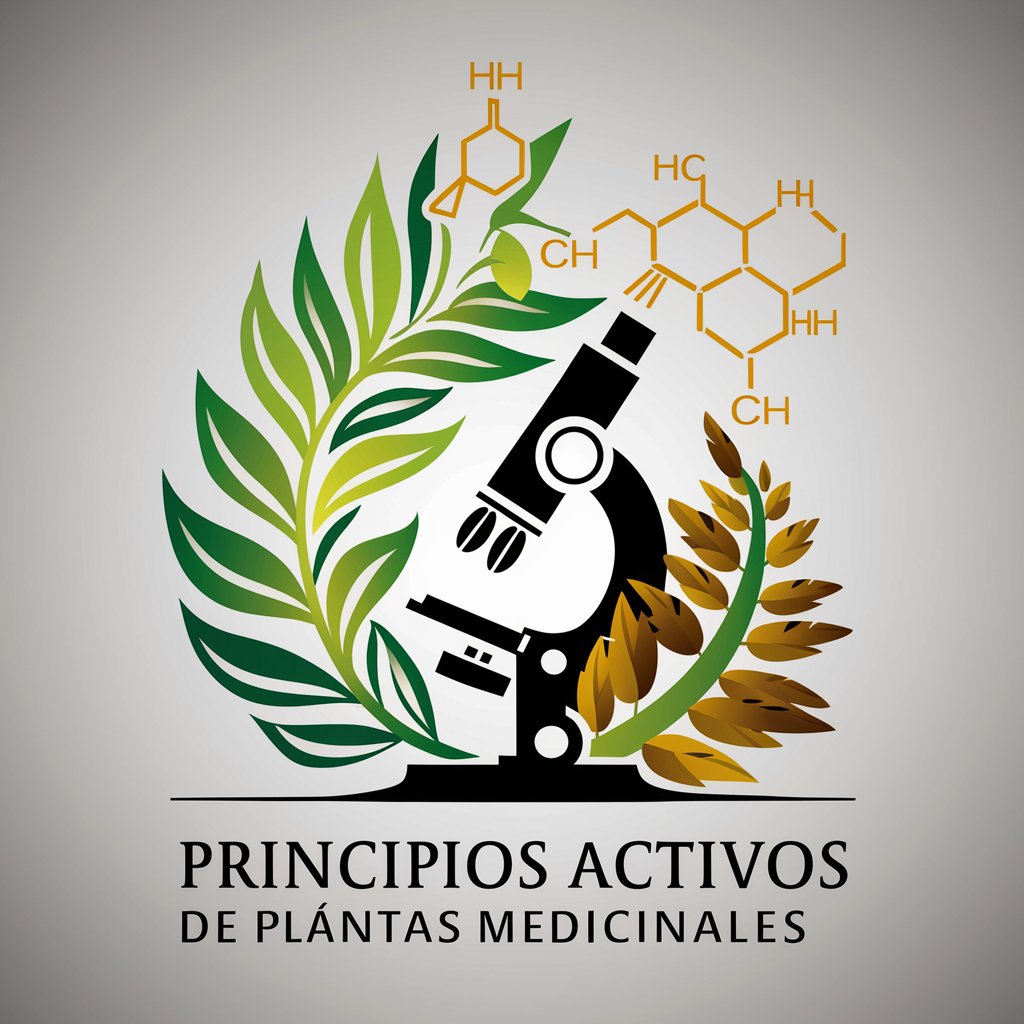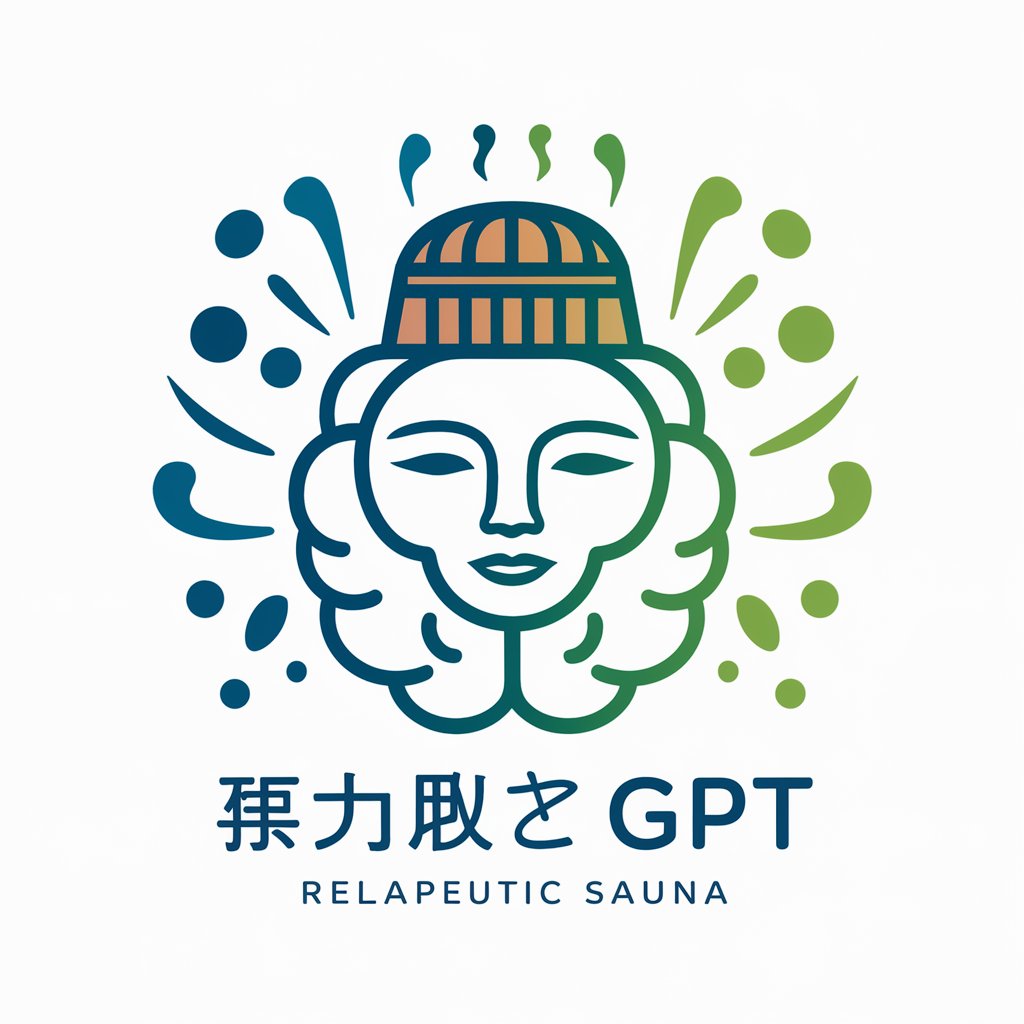Principios Activos de Plantas Medicinales - Medicinal Plant Insights

Welcome! Let's explore the world of medicinal plant metabolites.
Unlock Nature's Pharmacy with AI
List the secondary metabolites found in Aloe vera and describe their chemical structures.
Describe the solubility of curcumin in various solvents.
Detail where alkaloids are located in the Catharanthus roseus plant.
Explain the health benefits of flavonoids in Ginkgo biloba.
Get Embed Code
Principios Activos de Plantas Medicinales: An Overview
Principios Activos de Plantas Medicinales is a specialized GPT designed to provide comprehensive information about the active principles (secondary metabolites) found in medicinal plants. These compounds, crucial for the plants' survival, also offer various health benefits when used in human medicine. This GPT's design purpose is to bridge the gap between traditional herbal knowledge and modern scientific understanding, making information on plant metabolites accessible, accurate, and visually engaging. Through detailed identification, solubility profiles, localization in plants, health benefits, optimal extraction methods, and safe use guidelines, it serves as an invaluable resource for those interested in phytotherapy, pharmacognosy, and natural product research. For example, it can detail the flavonoids in Ginkgo biloba, their solubility in different solvents, their presence in leaf extracts, their role in improving cognitive function, and the best extraction methods to retain their bioactivity. Powered by ChatGPT-4o。

Core Functions and Real-World Applications
Identification of Secondary Metabolites
Example
Listing alkaloids present in Uncaria tomentosa (Cat's Claw) and their chemical structures.
Scenario
Researchers studying Cat's Claw's potential anti-inflammatory properties can use this information to focus their investigations on specific alkaloids.
Solubility of Secondary Metabolites
Example
Detailing the solubility of terpenoids from Lavandula angustifolia (Lavender) in water, alcohol, and oil.
Scenario
This aids in the formulation of lavender-based products, ensuring that the extraction solvent used maximizes the yield of desired terpenoids for therapeutic applications.
Localization in the Plant
Example
Describing the concentration of saponins in the roots of Panax ginseng.
Scenario
Herbalists can target the extraction of roots for products aimed at boosting immunity, leveraging the higher saponin content.
Health Benefits
Example
Explaining the antioxidant and neuroprotective effects of polyphenols in Vitis vinifera (Grapes).
Scenario
Nutritionists can recommend grape-based diets or supplements to patients for their potential health benefits, backed by scientific evidence provided by the GPT.
Optimal Extraction Methods
Example
Recommending supercritical CO2 extraction for obtaining cannabinoids from Cannabis sativa.
Scenario
This information is valuable for manufacturers of medicinal cannabis products seeking efficient methods to extract cannabinoids while preserving their purity and potency.
Target User Groups
Researchers and Scientists
Academics and industry professionals in pharmacology, botany, and natural product chemistry who require detailed chemical profiles and extraction techniques for plant studies.
Herbalists and Traditional Medicine Practitioners
Experts in traditional and herbal medicine looking for scientifically validated information on the active compounds in medicinal plants and their health benefits.
Product Developers and Formulators
Professionals in the pharmaceutical, cosmetic, and food industries seeking to incorporate natural ingredients into their products, requiring knowledge on solubility, extraction methods, and compound localization.
Educators and Students
Teachers and learners in related fields who benefit from accessible, accurate information on medicinal plants for educational purposes.

How to Use Principios Activos de Plantas Medicinales
Start Your Journey
Access a free trial easily at yeschat.ai, no login or ChatGPT Plus subscription required.
Identify Your Needs
Define your specific interest or requirement related to medicinal plants, such as identifying active compounds, understanding their health benefits, or learning about extraction methods.
Ask Your Question
Pose your query clearly, focusing on one aspect at a time, such as the solubility of a metabolite, its location in the plant, or its medicinal uses.
Review the Information
Examine the detailed information provided, including chemical structures, solubility, plant location, health benefits, and extraction methods.
Apply Knowledge Safely
Use the information responsibly, taking into account safety warnings and legality. Always consult with a healthcare professional before using any medicinal plant products.
Try other advanced and practical GPTs
Roastmy.design
Elevating Designs with AI-Powered Insight

Profile Page Pro
Craft Your Digital Identity with AI

CiberpunkRPG Español
Craft Your Cyberpunk Saga with AI

Simuverse RPG
Embark on AI-powered fantasy quests

Epic Dungeon Saga
Embark on AI-powered Fantasy Quests

Zero Hour
Survive the apocalypse with AI-driven adventures

Apocalypse Advisor
Tailored Survival Strategies, Powered by AI

サウナ GPT
Discover Sauna Experiences Powered by AI

中国語質問サンドバッグ
Practice Chinese with AI, Embrace Every Role

Education Explorer
Empowering School Choices with AI

本のおすすめ
Discover Your Next Read with AI

無知な女性社員
Empowering Creativity with AI Insight

Frequently Asked Questions about Principios Activos de Plantas Medicinales
What are secondary metabolites in medicinal plants?
Secondary metabolites are organic compounds produced by plants that are not directly involved in the normal growth, development, or reproduction of the organism. They include alkaloids, terpenes, flavonoids, and phenolic compounds, offering various medicinal properties and health benefits.
How can I find out which part of a plant contains a specific metabolite?
You can ask directly about the plant of interest, specifying the metabolite if known. The tool provides detailed information on the location within the plant where each metabolite is found, such as leaves, roots, or flowers.
What is the best method for extracting alkaloids from plants?
The optimal extraction method depends on the specific alkaloid and plant material. Common methods include solvent extraction, distillation, and supercritical fluid extraction. The tool recommends the most effective method based on the metabolite and plant in question.
Can Principios Activos de Plantas Medicinales suggest plants with anti-inflammatory properties?
Yes, by specifying your interest in anti-inflammatory properties, the tool can list plants known for these benefits, detailing the active compounds responsible and their effects on health.
Are there safety concerns with using medicinal plants?
Yes, while medicinal plants can offer health benefits, they also come with safety concerns. The tool provides safety warnings and legal advisories for each plant and metabolite, emphasizing the importance of consulting healthcare professionals.
